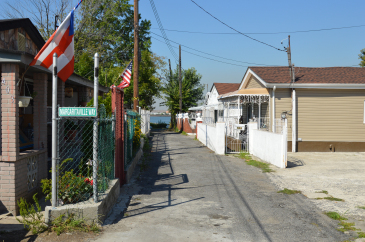Harding Park, a small neighborhood in New York City, lies at the end of the Bx19 bus line. Harding Park, an approximately one square mile, about 20 city blocks, region in the Clason Point section of the south Bronx, is remarkable not for its cuisine, its nightlife or even its culture, but for its silence.
To better understand this unique area, let me share a brief history of Harding Park. Thomas Higgs was an amusement park owner in the early twentieth century. His family owned the one hundred acre section of beachfront property that, by the 1920s, was ripe for development. Higgs saw an opportunity to capitalize on New York’s prosperity during a time of major development by creating a beach getaway for rich Manhattanites, tucked away in the Bronx. The place would act as a sort of mini-vacation destination: a way to escape the rush of New York without ever actually leaving the city limits.
His project was modeled off of places like Cape Cod and Nantucket, both in Massachusetts, complete with colorful bungalows and tiny streets. Being the industrious patriot that he was, Higgs decided to name his new neighborhood “Harding Park,” after the president at the time, Warren G. Harding.
It was all for naught, though. The Great Depression effectively left this vacation development empty, considering many were in financial distress and in jeopardy of losing their actual homes. Throughout the majority of World War II, the neighborhood lay forgotten, its colors fading, its streets crumbling. After the war, many of Harding Park’s beach bungalows were renovated and expanded, some to almost double their original size, as the neighborhood became a permanent residence for over 250 families who were victims of a housing shortage that was occurring at the time.
The “little neighborhood that could” persisted into the 1970s and 80s, surviving both a demolition attempt by New York’s Master Builder, Robert Moses, and the infamous “the Bronx is burning” arson fires of the 1970s. The latter did take its toll, however, damaging or destroying a significant portion of the residential buildings in Harding Park. In 1982, residents formed the Harding Park Homeowners Association, making Harding Park the first low to moderate income neighborhood in the city to become cooperatively owned.
It is still far from the utopia that Higgs envisioned. Today, 20 percent of the Harding Park population lives below the poverty line, the streets regularly flood and there is only one school nearby. The Homeowner’s Association, while landmark for its creation, elicits mixed opinions among residents.
There are signals of a turnaround, however, or at the very least the beginning of one. Harding Park’s population is over 80 percent Hispanic and Latino, the New York Botanical Gardens oversees a small but flourishing community garden and the nearby Soundview Park is undergoing a $9 million restoration of its salt marsh.
What strikes you when you step off the bus at the Harding Park is the quiet. We become accustomed to all sorts of ambient noise in New York City: horns honking, people talking, music blaring. Even at Fordham, it is rare not to hear a distant siren or rumbling truck. It is a cacophony that we are made aware of only when we do not hear it, and one that is especially noticeable once the Bx19 clatters away and you are left wondering where all the people are. That is another thing that is odd about this place. The streets are all but empty. Admittedly I was there on a workday, but there was really nobody out, which is more than a little eerie in New York City.
Every two or three minutes a plane flew overhead, comically low, on its final approach to LaGuardia.
There is a rocky beach, of sorts, in Harding Park, which provides an excellent view of Manhattan’s skyline. You can also see Queens, if you look in the right place on a clear day. What affects you more than anything, though, is this area’s silence and tranquility. This is New York City, and it is library-quiet. It really is peaceful, and it is a peace that sticks with you.
One wants to believe that Harding Park is in a state of transition, but it is too early to tell. Maybe one day this place will return to its roots and become some Wall Street executive’s summer escape, but I cannot help thinking that it would lose something important in the process. Harding Park is a place defined by its past: a low income reality wrapped up in a man’s incomplete dream of a 1920s luxury beach town. To forget that would be to dismiss almost a century’s worth of struggle, adaptation and perseverance. So let us take it for what it is: a unique and colorful corner of the Bronx that was left behind by its target market, and instead became a story of persistence, community and quiet inspiration.






When I lived there as a child, it was a horrible, crumbling slum. Rats, trashy vacant lots. Awful. Poverty, domestic violence.
We got out in1968 and moved to Miami. Best thing that ever happened to my sister and myself
Both college graduates and doing well.